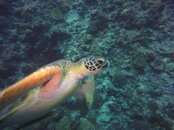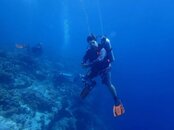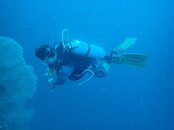Blackcrusader
Contributor
Wow I am blind. I legit did no even see the clear platform and just thought you meant the platform on the bottom of the gopro lol. Sorry! Yes it makes total sense how using 2 hands like that will stabilize it.
Yup your hands are like uncontrollable pendulums that swing wildly lol. Two things, the platform allows me to use one hand or both, my dive computer is on my right arm and faces me even when I am taking a video or photo ( too many nut jobs claiming I lose track of my depth, time to deco etc ) when they see the photos of me using it lol I use a shoelace tied to the platform hooked thru my BCD strap. Can unstrap the BCD if I want to release the shoe lace and set the platform down. OR you can use a carabena type clip
In fact to use the platform well you actually need to have better control of your buoyancy and you can easily maintain situational awareness as you do not need to look at the Go Pro screen. The Go Pro can even take good photos, video lights help a lot as does red filter.






